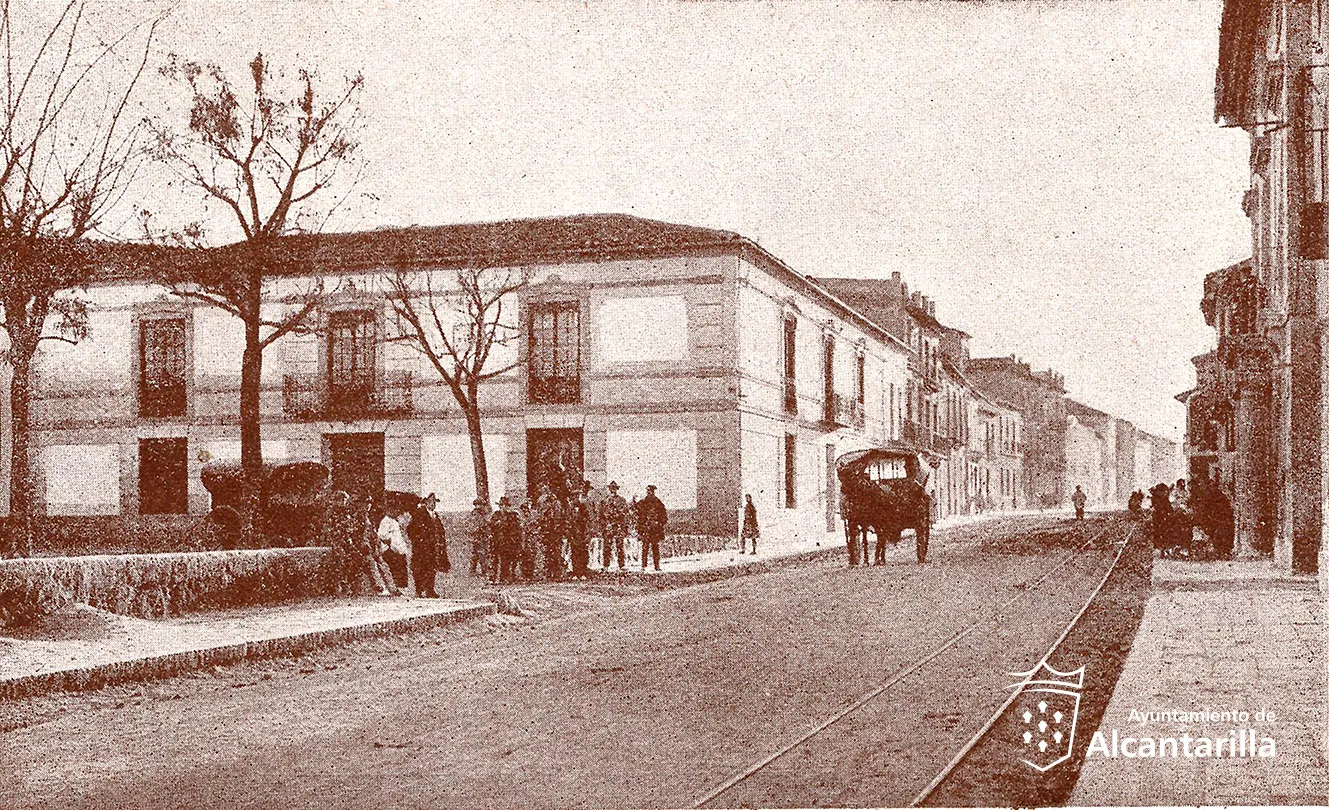
The old Town Hall building was an 18th century construction of smaller dimensions than the present one. It was distributed over two floors, with large windows and balconies on the façades, one facing the Plaza de San Pedro and the other facing the Calle Mayor. At the beginning of the 20th century, the deterioration of the building meant continuous repair work, with the incorporation of decorative elements to the outside, such as the plaster moldings that framed the doors and windows.
In 1930, the municipal corporation decided to build a tower on the corner of the Town Hall to install the public clock with four dials. When the building was demolished in 1945 to build the current Town Hall, the municipal clock was moved to another tower, now disappeared, in the Plaza del Aire de San Roque, according to a project by the architect Joaquín Dicenta Vilaplana, who also designed the current Town Hall.
Opposite the Town Hall was the “Casa de las Columnas”, on the corner of Calle Cura, built in the 18th century and demolished in 1977. The name comes from the columns that supported the central balcony of the house, with the coat of arms of the Castillo family. The columns were removed in the 1950s, and for many years the first floor of the building housed the Alcantarilla Telephone Exchange.
In the Calle Mayor you can see the rails of the tramway that connected the people of Alcantarilla with the capital of Murcia until it disappeared in 1929. The first Murcia-Alcantarilla line was created in 1896 with animal traction, later replaced by a steam engine, and in 1907 by an electric system. Its route was one-way on the right, from 1923, and ran along Calle Mayor to the old Calle Zamplana, later known as Calle Tranvía.
In the Plaza de la Iglesia, the Town Hall, and the parish church of San Pedro Apóstol, although their original buildings have disappeared, have occupied the same space for centuries and continue to be the religious and administrative centre of Alcantarilla.

